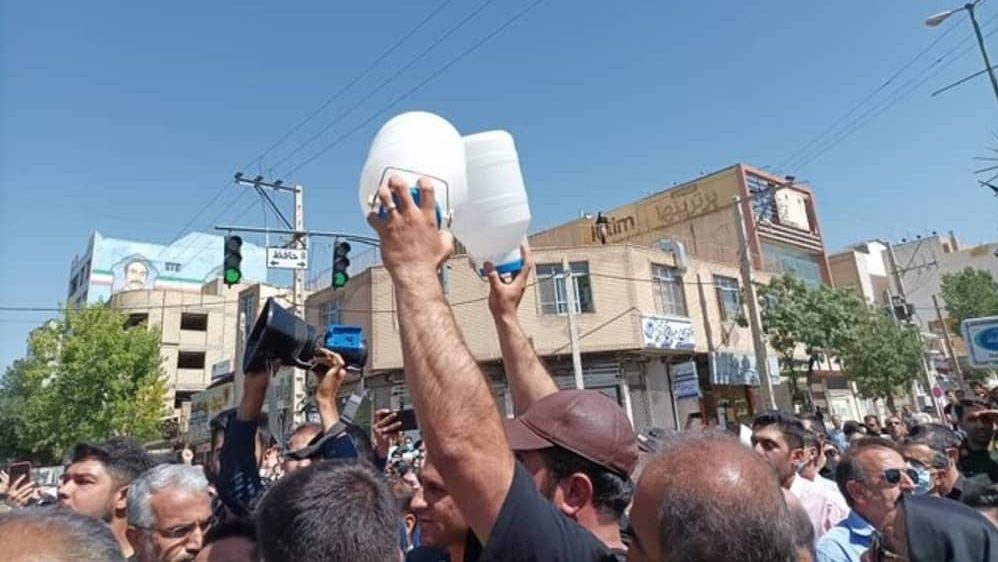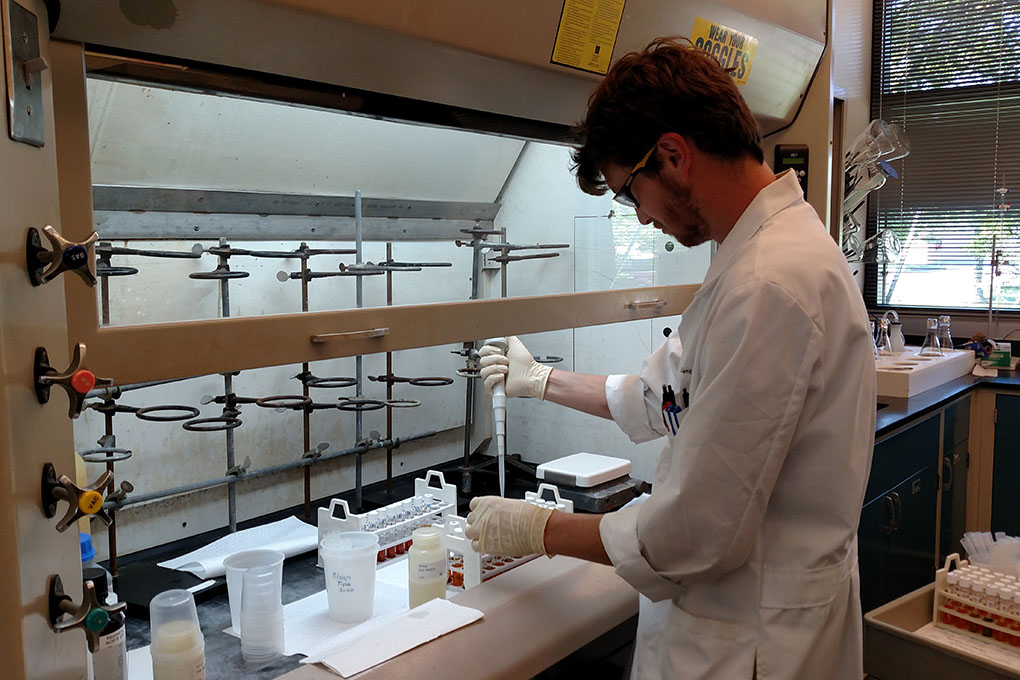11 months into a boil order, Osage County Rural Water District 21 needs a solution – Pawhuska Journal Capital

Report on the Protracted Water Crisis in Osage County, Oklahoma: An Analysis of Sustainable Development Goal Failures
Executive Summary
This report details a severe and ongoing public service failure in Osage County, Oklahoma, where residents of Rural Water District 21 have been under a boil water advisory for over 11 months. This situation represents a critical lapse in the provision of essential services and stands in direct opposition to the United Nations Sustainable Development Goals (SDGs).
- The crisis is a direct contravention of SDG 6 (Clean Water and Sanitation), which calls for universal and equitable access to safe and affordable drinking water for all.
- The potential for illness from contaminated water poses a significant threat to SDG 3 (Good Health and Well-being).
- Systemic failures in infrastructure, governance, and funding highlight challenges related to SDG 11 (Sustainable Cities and Communities) and SDG 16 (Peace, Justice, and Strong Institutions).
Technical Failures and Non-Compliance with SDG 6
The Oklahoma Department of Environmental Quality (DEQ) issued the boil order on August 16, 2024, citing a complete failure of the water treatment system. This failure to ensure water quality directly undermines Target 6.1 of the SDGs.
The primary technical issue is the bypassing of the system’s membrane filter unit, a crucial barrier against microbial pathogens. This unit became inoperable after being fouled by contaminants due to a breakdown in the pre-treatment system, which is designed to remove iron and manganese.
DEQ Mandated Remediation Steps
To lift the advisory and move toward compliance with SDG 6, the DEQ has mandated that the water district complete the following actions:
- Rehabilitate the pre-treatment system for iron and manganese removal.
- Rehabilitate or replace the fouled membrane filter unit.
- Demonstrate the ability to produce water that meets state turbidity and disinfectant requirements.
- Collect and submit confirmation samples verifying the water is safe for consumption.
Impacts on Public Health and Community Well-being (SDG 3 & SDG 11)
The prolonged advisory has severe consequences for the community, threatening public health and diminishing the quality of life, which are core tenets of SDG 3 and SDG 11.
- Health Risks: Residents are forced to boil water to prevent exposure to potential disease-causing organisms, a direct challenge to Target 3.9, which aims to reduce illnesses from water pollution.
- Degraded Living Conditions: Residents report the water is visibly brown and unusable, turning swimming pools black. This failure to provide a basic service undermines the goal of creating safe and sustainable communities.
- Economic Inequality: The district has reportedly failed to provide alternative water sources or billing rebates, placing the financial burden of securing safe water on residents. This disproportionately affects vulnerable households, conflicting with the principles of SDG 10 (Reduced Inequalities).
Institutional Challenges and the Need for Partnership (SDG 16 & SDG 17)
The crisis underscores significant institutional weaknesses, a key concern of SDG 16. The Osage Nation’s Natural Resources Director noted the water system “has been bad for many years,” indicating a history of systemic neglect and deferred maintenance. The estimated 1-2 year timeline for a potential resolution further highlights the incapacity of current systems to respond effectively.
Resolving this crisis requires robust collaboration as envisioned in SDG 17 (Partnerships for the Goals). The primary obstacle remains funding for both immediate repairs and long-term infrastructure upgrades, necessitating a coordinated effort between local, tribal, and state entities.
Pathways to a Sustainable Solution
Long-term strategies are essential to build resilient infrastructure and achieve permanent compliance with the SDGs.
- New Infrastructure: Experts suggest a new treatment plant and a new water source are the most viable long-term solutions to guarantee water safety.
- Alternative Water Sources: The possibility of drilling new wells is being explored to find a water source with lower contaminant levels that is more easily treatable.
- Technology Assessment: A pilot study of smaller, movable treatment systems yielded mixed results, reinforcing the need for comprehensive, permanent infrastructure investment over temporary measures.
SDGs Addressed in the Article
SDG 3: Good Health and Well-being
- The article highlights a significant public health risk. The boil water advisory was issued to “protect consumers from drinking water that may have been contaminated with disease-causing organisms.” The Oklahoma State Department of Health’s potential involvement is mentioned in situations that “may involve infectious disease,” directly linking the water quality issue to human health.
SDG 6: Clean Water and Sanitation
- This is the central theme of the article. It details the failure of Osage County Rural Water District 21 to provide safe drinking water to its customers for “over 11 months.” The water is described as “brown” and contaminated with “iron, manganese and other contaminants.” The entire narrative revolves around the lack of access to clean water and the failure of the sanitation (water treatment) infrastructure.
SDG 9: Industry, Innovation, and Infrastructure
- The article extensively discusses failing infrastructure as the root cause of the problem. The Oklahoma Department of Environmental Quality (DEQ) cited a “water treatment failure,” specifically a “fouled” membrane filter unit and a pre-treatment system that was “not performing as it should.” The discussion about long-term solutions, such as needing a “new treatment plant and a new water source,” and the financial challenges in paying for these “repairs and changes” directly relate to the need for resilient and sustainable infrastructure.
SDG 11: Sustainable Cities and Communities
- The issue is located in a specific community, “Osage County Rural Water District 21.” The failure to provide a basic service like safe drinking water directly impacts the sustainability and quality of life in this rural community. The article notes that residents are in a “predicament” and have not been offered alternative water sources or billing rebates, highlighting a failure in providing essential services to the community’s inhabitants.
Specific Targets Identified
Under SDG 3: Good Health and Well-being
- Target 3.9: By 2030, substantially reduce the number of deaths and illnesses from hazardous chemicals and air, water and soil pollution and contamination.
- The article’s focus on the boil water advisory as a precaution against “disease-causing organisms” and potential “infectious disease” directly addresses the goal of preventing illnesses caused by water contamination.
Under SDG 6: Clean Water and Sanitation
- Target 6.1: By 2030, achieve universal and equitable access to safe and affordable drinking water for all.
- The article demonstrates a complete failure to meet this target for the residents of the water district. The water is unsafe, as evidenced by the 11-month boil advisory and its “brown” appearance, forcing residents like Paul Mays to use alternative well water.
- Target 6.3: By 2030, improve water quality by reducing pollution, eliminating dumping and minimizing release of hazardous chemicals and materials, halving the proportion of untreated wastewater and substantially increasing recycling and water reuse globally.
- The DEQ’s findings that the water system failed to remove “iron, manganese and other contaminants” and did not meet “turbidity and disinfectant requirements” point directly to a failure in improving water quality through proper treatment.
Under SDG 9: Industry, Innovation, and Infrastructure
- Target 9.1: Develop quality, reliable, sustainable and resilient infrastructure, including regional and transborder infrastructure, to support economic development and human well-being, with a focus on affordable and equitable access for all.
- The article describes the infrastructure as unreliable and failing. The pre-treatment system and membrane filter unit are not functional, and the system “has been bad for many years.” The need for a “new treatment plant” and the “challenge” of funding underscore the lack of resilient infrastructure.
Under SDG 11: Sustainable Cities and Communities
- Target 11.1: By 2030, ensure access for all to adequate, safe and affordable housing and basic services and upgrade slums.
- Safe drinking water is a fundamental basic service. The article shows that this service is not being provided to the residents of the rural water district, impacting their well-being and the community’s viability.
Indicators Mentioned or Implied
For Measuring Progress Towards Identified Targets
- Duration of service disruption: The article repeatedly states the boil water advisory has been in place for “over 11 months,” which serves as a direct indicator of the failure to provide safe water (Target 6.1) and the lack of resilient infrastructure (Target 9.1).
- Water quality parameters: The article implies specific technical indicators by mentioning the system’s failure to remove “iron and manganese,” and its inability to meet “turbidity and disinfectant requirements.” These are measurable indicators of water quality (Target 6.3).
- Infrastructure status: The description of the infrastructure—a “fouled” membrane unit, a non-performing pre-treatment system, and the system bypassing the filter unit—serves as a qualitative indicator of the state of infrastructure (Target 9.1).
- Public health alerts: The issuance of a “boil water order” by the DEQ is a direct indicator of water being unsafe for consumption and the presence of health risks from waterborne pathogens (Target 3.9).
- Population affected: The article identifies the affected population as the residents of “Osage County Rural Water District 21,” which covers “roughly the northwest quarter of the county.” This defines the scope of the failure to provide basic services (Target 11.1) and safe water (Target 6.1).
SDGs, Targets, and Indicators Analysis
| SDGs | Targets | Indicators Identified in the Article |
|---|---|---|
| SDG 3: Good Health and Well-being | 3.9: Substantially reduce illnesses from water pollution and contamination. | Issuance of a boil water advisory to protect against “disease-causing organisms”; Mention of potential “infectious disease.” |
| SDG 6: Clean Water and Sanitation | 6.1: Achieve universal and equitable access to safe and affordable drinking water.
6.3: Improve water quality by reducing pollution and treating water. |
Duration of boil water advisory (“over 11 months”); Physical description of water (“brown,” makes pool “black”); Failure to remove “iron, manganese and other contaminants”; Failure to meet “turbidity and disinfectant requirements.” |
| SDG 9: Industry, Innovation, and Infrastructure | 9.1: Develop quality, reliable, sustainable and resilient infrastructure. | Description of failing equipment (“fouled” membrane unit, non-performing pre-treatment system); System “has been bad for many years”; Identified need for a “new treatment plant”; Funding challenges for repairs. |
| SDG 11: Sustainable Cities and Communities | 11.1: Ensure access for all to adequate, safe and affordable basic services. | Lack of safe drinking water for a specific rural community (“Osage County Rural Water District 21”); No provision of alternative water sources or billing rebates to affected residents. |
Source: pawhuskajournalcapital.com

What is Your Reaction?
 Like
0
Like
0
 Dislike
0
Dislike
0
 Love
0
Love
0
 Funny
0
Funny
0
 Angry
0
Angry
0
 Sad
0
Sad
0
 Wow
0
Wow
0








































































